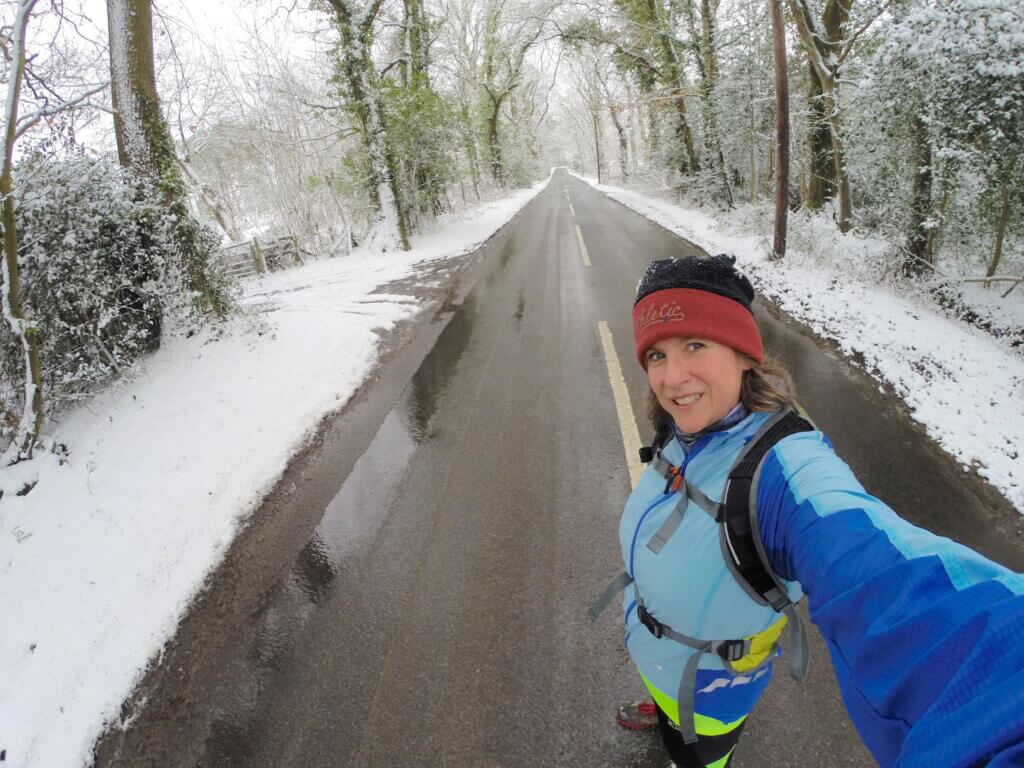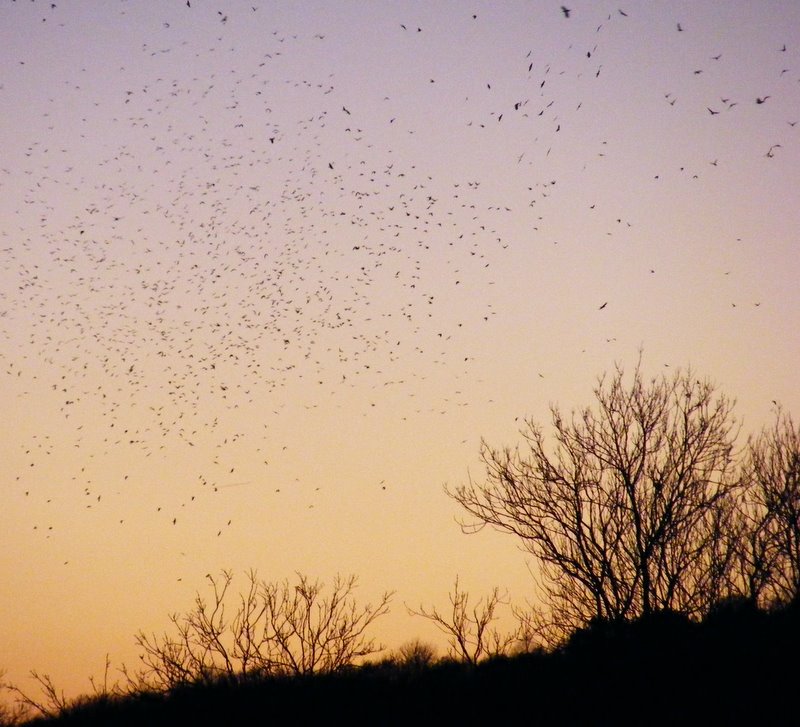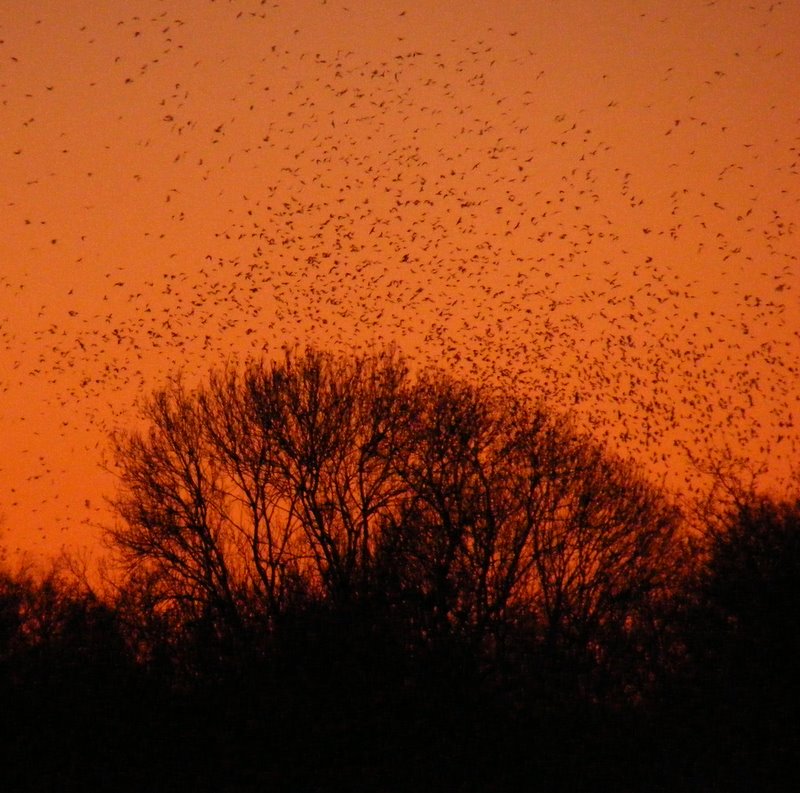
Jane is a naturalist, photographer and nature writer living in Dorset. Her work has appeared in books, anthologies and blogs for charities such as The Wildlife Trusts and the International Bee Research Association. When she’s not exploring Dorset’s lanes and countryside she can be found lying on her stomach watching insects in her garden. Jane is currently studying for an MA in Travel and Nature Writing at Bath Spa University and can be found: www.janevadams.com and on Twitter @WildlifeStuff Jane’s previous Guest Blogs here can be found here.

The Jackdaw Roost
Have you ever had a flying dream? I don’t mean a dream where you’re flying in an aeroplane, I mean a full blown flap-your-arms-and-fly kind of dream? I used to get them all the time as a kid – they were exhausting, exhilarating and, most of all, joyful.
For several afternoons this week I’ve been watching jackdaws flying to their pre-roost in the trees at Knoll Clump, a small copse of oaks perched high on the edge of Corfe Mullen. The main roost lies a mile to the south, over the next hill at Mountain Clump and down into a quiet hidden valley called Stoney Down.
I first noticed the roost in the winter of 2008. We’d been living in our house for a couple of years and I’d started hearing the tchack, tchack of jackdaws flying over at dusk. From our hilltop vantage point it didn’t take long to spot where these birds were going. Like spokes on a wheel, dotting the sky from every direction jackdaws were heading towards Knoll.
Twelve years later they still gather here. On this cold afternoon just before Christmas, three hundred birds are already draped across the tops of the trees. Grey squirrels jump angrily from branch to branch below them but the birds themselves land and then calmly point in the direction of the main roost. Waiting.
This is not a silent affair. As birds approach there is talking in the air, especially just before they land, and once in the trees some reposition themselves and set off a chain reaction of tchacks as birds jostle for position beside their mate.
The light is fading, it’s well past sunset, and they will soon depart. I hurriedly cross Knoll Lane, climb the stile and struggle up a field of thick mud to the peak of the hill, beside the ancient oak and the sleeping pigs.
Behind me there’s a momentary silence before the flock clatters into the air – calling excitedly as if cheering each other on in an imaginary race. They’re soon over me. Skimming the hill their wings silhouetted against the red sky, a mass of power and noise that gets right inside you. This is when I wish I could fly again. Could flap my arms and join them in this aerial confusion, but all too soon they are gone.

Gotta love a jackdaw
Yes, they are beautiful birds – and thank you, Jane, it’s lovely to watch your video.
Thank you Marian – glad you enjoyed it. I sometimes feel guilty it’s just me stood at the top of the hill enjoying it – so it’s great to be able to share it.
Absolutely. I feel the same.
Is that a chatteration or a clatteration of Jackdaws. Somehow it has not got the magic of a “murmuration” as of starlings but I guess the wood will stink much the same. Starlings roosted in a wood near our old house and the floor was slimy with a light scatter of corpses. Did not visit very often.
Before one blew down and the rest were reduced Jackdaws used to sit on top of my neighbours three tall Lombardy poplars at dawn, at this time of year, to bask in the first rays of the slowly rising sun to get warm and have a bit of a chat.
I can see a copse near us where Jackdaws congregate on some windy days. Together with a few crows they make use of the updraughts for a bit of wind surfing and general fun with much shouting..
We have a troop of 60 greenfinches that hang around in the top of the big trees outside the garden at dusk and go for flights round before dropping in to roost in a big holly. It is accompanied by a pleasant cheeping.No idea what that would be called.
Ahh, now you see I disagree. I think it’s just as magical as a murmuration (and I’ve seen big murmurations of starlings at the Somerset levels) but different. When a clatteration of jackdaws (or a train) fly low over your head, screaming and shouting to each other, then dance over the trees before descending – it sends tingles down your spine. Someday I’m sure I’ll get an unwelcome present straight in the face too!
I imagine the roosting site is rather stinky – it’s in private woods – but I’m sure the foxes and badgers have a field day with the few that don’t make it through the night.
Lovely prose and video Jane, so atmospheric. I wonder what they are communicating with all the calling? Ravens in Anglesey roosts have been shown to call and display to let other selected birds know they have found food and to fly there together the following morning.
Thank you. That’s very kind of you – I’m glad you enjoyed it.
Most of the jackdaws seem to be in pairs or small family groups ‘within’ the overall roost – so I’m sure a lot are contact calls to keep the family close together. Plus there’s a lot of calling as they land – maybe a warning shout to ‘make way’ to others who are already there? Fascinating though. So much we don’t know.